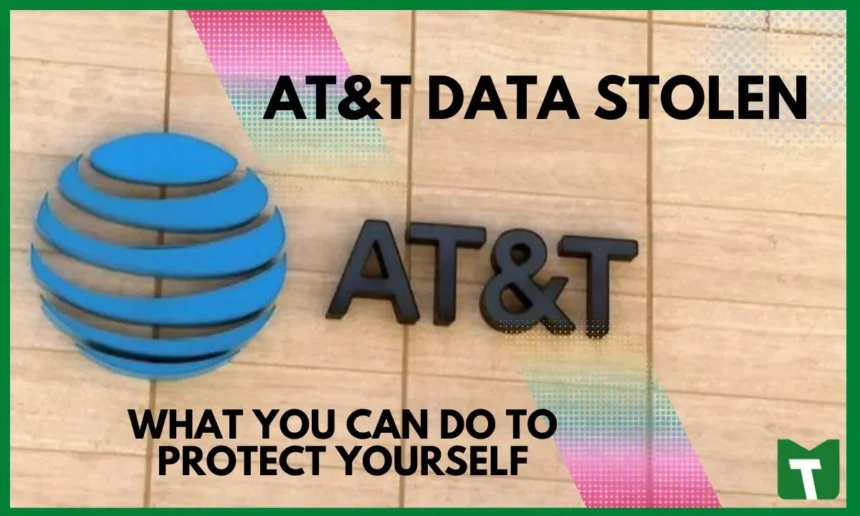AT&T data stolen, AT&T said this past weekend that 73 million of its previous and current customers’ stolen data is available on the dark web. According to a statement from AT&T, the personal data, which includes Social Security numbers, appears to be from 2019 or earlier and pertains to roughly 7.6 million current account holders and 65.4 million past customers.
When hackers claimed to have taken customer data from AT&T and planned to sell it, the leak was first discovered in 2021. According to Troy Hunt, the man behind Have I Been Pwned, the stolen personal data was found on the dark web in March 2024.
In response, AT&T announced that it has reset the passcodes for the 7.6 million active users after getting in touch with them. You can potentially mitigate the impact of the breach by taking action, regardless of whether you belong to the larger group of previous account holders who believe their data was stolen in the breach or the smaller group of current customers. See what you can do by reading on. When CNET asked AT&T for comment, the company didn’t get back to us right away.
What to know about the AT&T data stolen
AT&T said on March 30 that in the middle of March, 73 million personal records of both past and present customers were obtained via the dark web. The company said that although the stolen data appeared to be from 2019 or earlier, it is unclear if it came from AT&T or one of its vendors.
What is an AT&T passcode?
A customer’s passcode, which typically consists of four numbers, functions similarly to a PIN. Different from a password, a passcode is needed to finish an AT&T installation, handle personal account operations over the phone, or get in touch with technical help, according to AT&T.
What personal Data was stolen in the AT&T breach?
Hackers were able to access the following information: full name, email address, mailing address, phone number, Social Security number, date of birth, AT&T account number, and passcode. The exact customer and account information that was stolen may vary depending on the account. AT&T claims that no call logs nor sensitive financial details appear to be included in the data.
How to monitor your credit report for fraud
You can keep an eye out for any indications of possible fraud on your credit reports if you believe that the AT&T hack included your personal information.
Monitor your credit reports
Equifax, Experian, and TransUnion are the three main credit bureaus, and each offers one free credit report annually. Keep an eye out for any strange or unfamiliar behavior on your report, such as the emergence of new accounts that you did not open. Additionally, keep an eye out for unforeseen expenses and payments on your bank and credit card bills.
Sign up for a credit monitoring service
Select a credit monitoring service that will track your credit report across all major credit agencies continuously and provide you alerts if it notices anything out of the ordinary. You can set up fraud alerts to get notified if someone tries to exploit your identity to establish credit, which will aid in monitoring. You can utilize a free service like Credit Karma, or you can pay $7.50 a month for a credit-reporting service like LifeLock.
How to see if your DATA was part of the AT&T leak
AT&T announced that it will notify the 7.6 million current customers whose data was taken through mail or email, explaining the situation, the information that was stolen, and the company’s response. Passcodes for affected current clients have been reset, the organization reports. The company claims that it is in communication with the 65.4 million former clients whose data was stolen.
However, you don’t have to wait for AT&T to contact you. You may find out if your data has been hacked by using Have I Been Pwned. Whether you store your password information in a Google account, you can use the company’s Password Checkup service to see if it has been compromised. Additionally, our favorite password manager, Bitwarden’s premium edition, can scan the internet for password theft.
You may help secure your account by changing your password and PIN if AT&T hasn’t contacted you.
What You Can Do to Protect Yourself– if you suspect you’re a victim of identity theft
As soon as you become aware that your identity has been compromised, take steps to prevent further charges and begin the process of rebuilding your identity.
Set up a fraud alert
Set up a fraud alert with Equifax, Experian, and TransUnion, the three credit reporting agencies, if you believe there has been fraudulent activity. Creditors are notified by the alert that you have been the victim of fraud and should confirm any new credit requests made in your name with you. An extended fraud alert, which remains on your credit record for seven years, or an initial fraud warning, which remains on your credit report for ninety days, might be placed. Setting up a fraud alert has no impact on your credit report.
Speak with fraud departments
Get in touch with the fraud department of any firm or credit card provider if you believe an account was started or charged without your knowledge. Even when fraudulent charges to an account are not your fault, you still need to report suspicious behavior right once.
